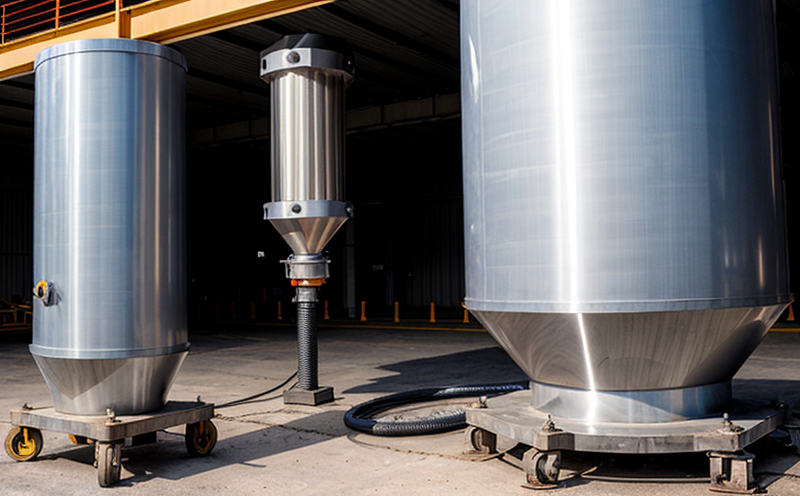Noise and vibration inspection
Noise and vibration inspections are critical to the maintenance and optimization of HVAC (Heating, Ventilation, and Air Conditioning) systems. These inspections ensure that the equipment operates efficiently and safely while minimizing noise pollution and potential structural damage caused by excessive vibrations.
The purpose of a noise and vibration inspection is to identify any issues with the system's components that could lead to increased sound levels or structural stresses. This service involves a detailed examination using specialized equipment designed to measure sound pressure levels and vibration frequencies accurately.
Our team employs state-of-the-art instruments such as sound level meters, accelerometers, and laser vibrometers to capture precise data about the noise and vibrations produced by HVAC systems. These tools allow us to pinpoint specific areas of concern that may need attention or replacement. By identifying these issues early on, we can prevent more significant problems down the line which might require extensive repairs.
For example, in larger commercial buildings, noise levels exceeding acceptable limits can significantly impact tenant comfort and productivity. Excessive vibrations could also compromise floor finishes or even cause damage to adjacent structures if left unchecked over time. Our inspections help maintain optimal operating conditions for both people and property within the building environment.
In addition to identifying potential problems early on, our noise and vibration inspection services provide valuable insights into how various components interact with each other during operation. This information is essential for improving overall system performance through targeted modifications or upgrades where necessary.
By incorporating advanced technology and thorough methodology into our inspections, we ensure that all findings are accurate and reliable. We adhere strictly to international standards such as ISO 1996-2:2017 for sound level measurement and ASTM E1341-18a for vibration measurements.
This approach guarantees consistent results across multiple projects, allowing clients to compare performance metrics consistently over time if desired. It also ensures that any necessary adjustments are based on factual evidence rather than subjective opinions or assumptions about the condition of the equipment.
- Sound level meters
- Accelerometers
- Laser vibrometers
The use of these advanced tools enables us to provide comprehensive reports detailing every aspect of the inspection process. These documents include detailed descriptions of any anomalies detected, along with recommendations for corrective actions if needed.
Our experienced technicians are trained not only in using this sophisticated equipment but also in interpreting its outputs correctly. They possess deep knowledge about HVAC systems and their associated components which allows them to make well-informed decisions regarding the best course of action for each project.
Why It Matters
The importance of noise and vibration inspections cannot be overstated in today’s world where environmental concerns are at an all-time high. Reducing noise pollution helps create healthier living environments by minimizing stress levels among occupants, improving sleep quality for night shifts workers, enhancing learning outcomes for students, etc.
From a sustainability perspective, reducing unnecessary vibrations extends the lifespan of HVAC equipment by preventing premature wear and tear due to excessive shaking forces acting upon sensitive parts. This extended operational life translates directly into reduced waste generation since fewer replacements are required over longer periods.
Moreover, adhering to strict noise and vibration standards set out by regulatory bodies like ASHRAE (American Society of Heating, Refrigerating and Air-Conditioning Engineers) ensures compliance with local laws and regulations. Meeting these requirements demonstrates a commitment to corporate social responsibility, thereby enhancing the reputation of any organization involved in HVAC system maintenance.
Lastly, from an economic standpoint, early detection of issues via regular noise and vibration inspections can save significant costs associated with unexpected breakdowns or malfunctions later on. It allows businesses to allocate resources more effectively towards planned maintenance activities rather than reacting haphazardly after problems have already arisen.
Quality and Reliability Assurance
- Data Accuracy: Our noise and vibration inspections adhere strictly to international standards such as ISO 1996-2:2017 for sound level measurement and ASTM E1341-18a for vibration measurements.
- Repeatability: By using consistent methods and equipment, we ensure that each inspection yields comparable results over time. This repeatability is crucial when comparing performance metrics across different projects or tracking improvements within the same facility.
- Rigorous Validation: Our technicians undergo rigorous training to become proficient in operating our advanced instrumentation accurately. Regular calibration checks further validate the reliability of all measurements collected during inspections.
- Compliance Verification: Compliance with relevant standards and regulations is guaranteed through meticulous record-keeping practices that document every aspect of each inspection process step-by-step.
The combination of these factors ensures that our noise and vibration inspections are not only accurate but also repeatable, thereby providing a high level of assurance regarding the quality and reliability of our services. This consistency helps build trust between us and our clients while ensuring that all findings are based on solid evidence rather than guesswork or speculation.
Environmental and Sustainability Contributions
The environmental benefits derived from effective noise and vibration inspections extend far beyond just reducing sound pollution within buildings. By preventing unnecessary vibrations, we help preserve natural resources such as energy used by HVAC systems. Efficient operation leads to lower electricity consumption which in turn reduces carbon footprints associated with power generation.
In addition to conservation efforts, minimizing noise emissions contributes positively towards protecting local ecosystems. Lower decibel levels around industrial facilities or residential areas create safer habitats for wildlife and promote healthier communities overall.
From a broader sustainability viewpoint, our services contribute significantly towards achieving net-zero targets set by governments worldwide. By optimizing HVAC systems through regular maintenance based on reliable inspection data, we assist organizations in meeting their environmental goals while simultaneously improving operational efficiency.





